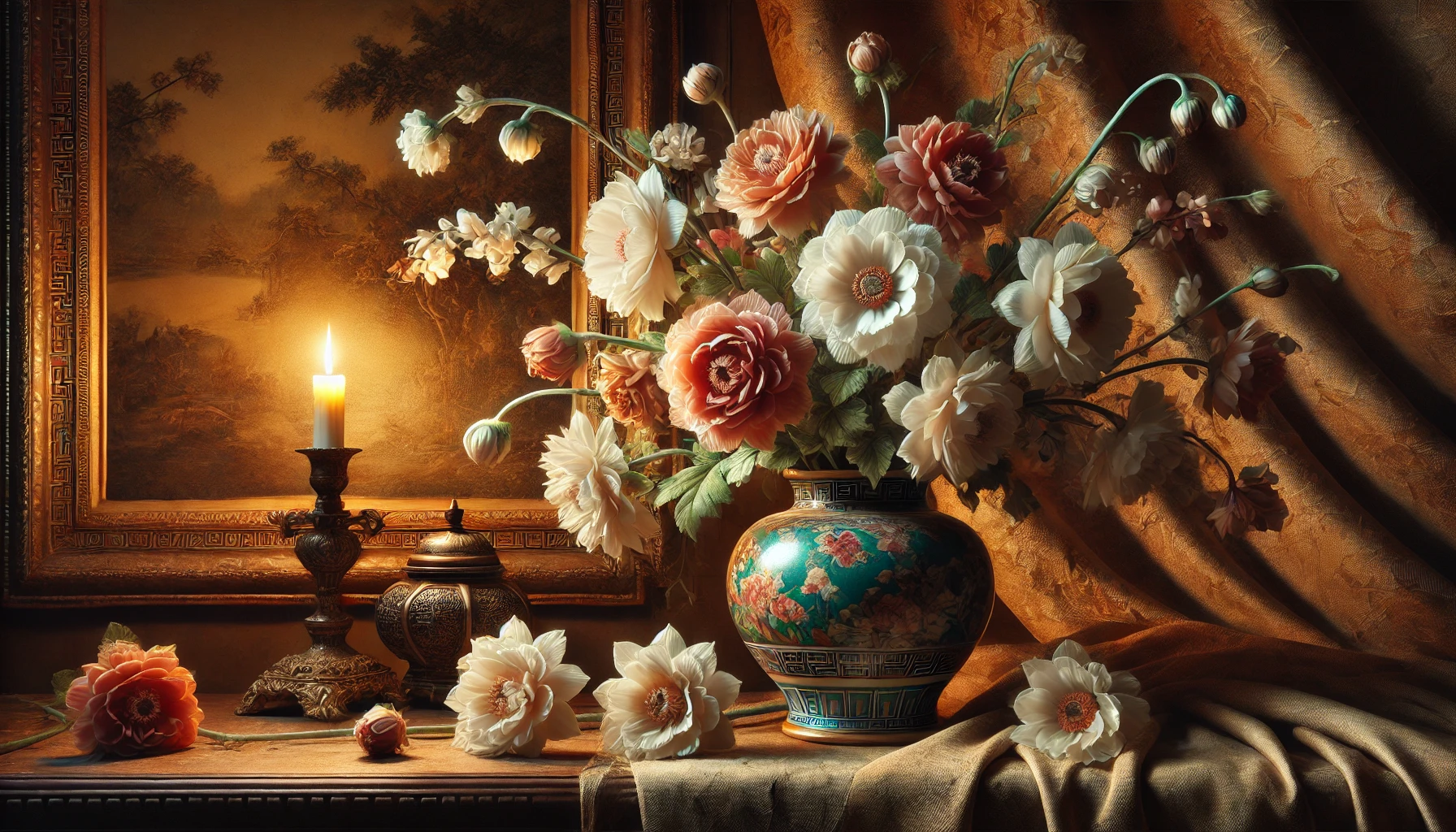Why are artificial flowers called silk flowers?
Silk flowers add elegance to any setting, but have you ever wondered why they are called "silk flowers"? Many assume they are always made of silk, but the truth is more complex.
Silk flowers got their name from early artificial flowers, which were handcrafted using silk fabric. Today, while many artificial flowers use polyester, plastic, or other materials, the name "silk flowers" remains a popular term for high-quality artificial blooms.

Artificial flowers have evolved significantly over time, incorporating a variety of materials and production techniques. To better understand their differences, let’s explore why they are called silk flowers and what sets them apart from other artificial blooms.
Why are they called silk flowers?
The term "silk flowers" can be misleading. Most people assume these flowers are made entirely of silk, but that is not always the case.
Silk flowers were originally crafted from pure silk, making them luxurious and delicate. As artificial flower production advanced, manufacturers began using more affordable and durable materials, but the traditional name "silk flowers" remained.
Evolution of Silk Flowers
| Period | Material Used | Notable Characteristics |
|---|---|---|
| Ancient China | Silk Fabric | Handmade, delicate designs |
| 19th Century | Silk & Wire | More realistic, increased durability |
| Modern Era | Polyester & Plastic | Cost-effective, mass production |
The term "silk flowers" originated from Chinese artisans, who first created delicate floral replicas using real silk. Over time, European markets adopted this art, enhancing craftsmanship and expanding materials. While silk was once the dominant material, modern manufacturing has embraced polyester for cost efficiency and durability. However, the traditional name has stuck, symbolizing elegance and premium quality.
What’s the difference between silk flowers and artificial flowers?
Many people use "silk flowers" and "artificial flowers" interchangeably, but they are not exactly the same.
Silk flowers refer specifically to high-end artificial flowers, often designed for decorative purposes. Artificial flowers, as a broader category, include plastic, foam, and fabric-based flowers used in various applications.
Key Differences
| Feature | Silk Flowers | Artificial Flowers |
|---|---|---|
| Material Used | Silk, Polyester | Plastic, Foam, Fabric |
| Appearance | More realistic | Varies in quality |
| Cost | Higher | More affordable |
| Durability | Delicate, long-lasting with care | Highly durable |
Silk flowers are a premium subcategory of artificial flowers, made with high-quality fabrics and intricate detailing. Artificial flowers, on the other hand, encompass a wide range of materials, including plastic and foam, making them suitable for different budgets and needs.
What is the proper name for fake flowers?
The word "fake" carries a negative connotation, but artificial flowers have come a long way in quality and realism.
The proper name for fake flowers is "artificial flowers." Other terms include "silk flowers" for high-end varieties and "permanent botanicals" for lifelike, long-lasting arrangements.
Alternative Terms for Fake Flowers
| Common Name | Usage Context |
|---|---|
| Artificial Flowers | General term for non-living flowers |
| Silk Flowers | High-end artificial flowers |
| Faux Flowers | Decorative term for upscale floral designs |
| Permanent Botanicals | Professional term used in interior décor |
The floral industry prefers using terms like "permanent botanicals" or "silk flowers" to highlight their longevity and decorative appeal, avoiding the negative stigma of "fake."
What are some disadvantages of using silk flowers?
While silk flowers are beautiful and long-lasting, they are not without drawbacks.
Silk flowers can be expensive and require careful maintenance. Unlike fresh flowers, they do not have a natural scent and may collect dust over time.
Drawbacks of Silk Flowers
| Disadvantage | Explanation |
|---|---|
| Higher Cost | High-quality materials make them more expensive than plastic alternatives |
| Maintenance | Requires dusting and occasional cleaning to maintain appearance |
| Lack of Natural Scent | Unlike real flowers, they do not have a fragrance |
| Not Biodegradable | Some materials used in silk flowers are not eco-friendly |
Despite these disadvantages, silk flowers remain a preferred choice for weddings, events, and home décor due to their elegance and longevity.
How long do artificial silk flowers last?
Artificial silk flowers are an investment, so their longevity is a key concern for buyers.
With proper care, artificial silk flowers can last 3-5 years indoors and even longer in controlled environments. Their lifespan depends on exposure to sunlight, dust, and moisture.
Factors Affecting Longevity
| Factor | Impact on Longevity |
|---|---|
| Sunlight Exposure | Can cause fading and deterioration |
| Dust Accumulation | Reduces vibrancy, requiring cleaning |
| Humidity Levels | Can affect fabric texture and durability |
Storing silk flowers in a cool, dry place and occasionally dusting them helps maintain their beauty for years.
What is the best material for fake flowers?
Not all artificial flowers are created equal. The best material depends on the desired look and purpose.
The best materials for fake flowers are silk, polyester, and latex. Silk provides a luxurious appearance, polyester is durable and affordable, and latex offers a lifelike texture.
Material Comparison
| Material | Pros | Cons |
|---|---|---|
| Silk | Realistic, elegant | Expensive, delicate |
| Polyester | Affordable, durable | Less realistic |
| Latex | Lifelike texture | Requires careful maintenance |
| Plastic | Budget-friendly | Looks less natural |
For premium arrangements, silk remains the gold standard, while polyester offers a balance of affordability and durability.
Conclusion
Silk flowers have a rich history and remain a popular choice for high-quality artificial arrangements. Whether you seek elegance or affordability, understanding materials and maintenance ensures a long-lasting, beautiful display.
